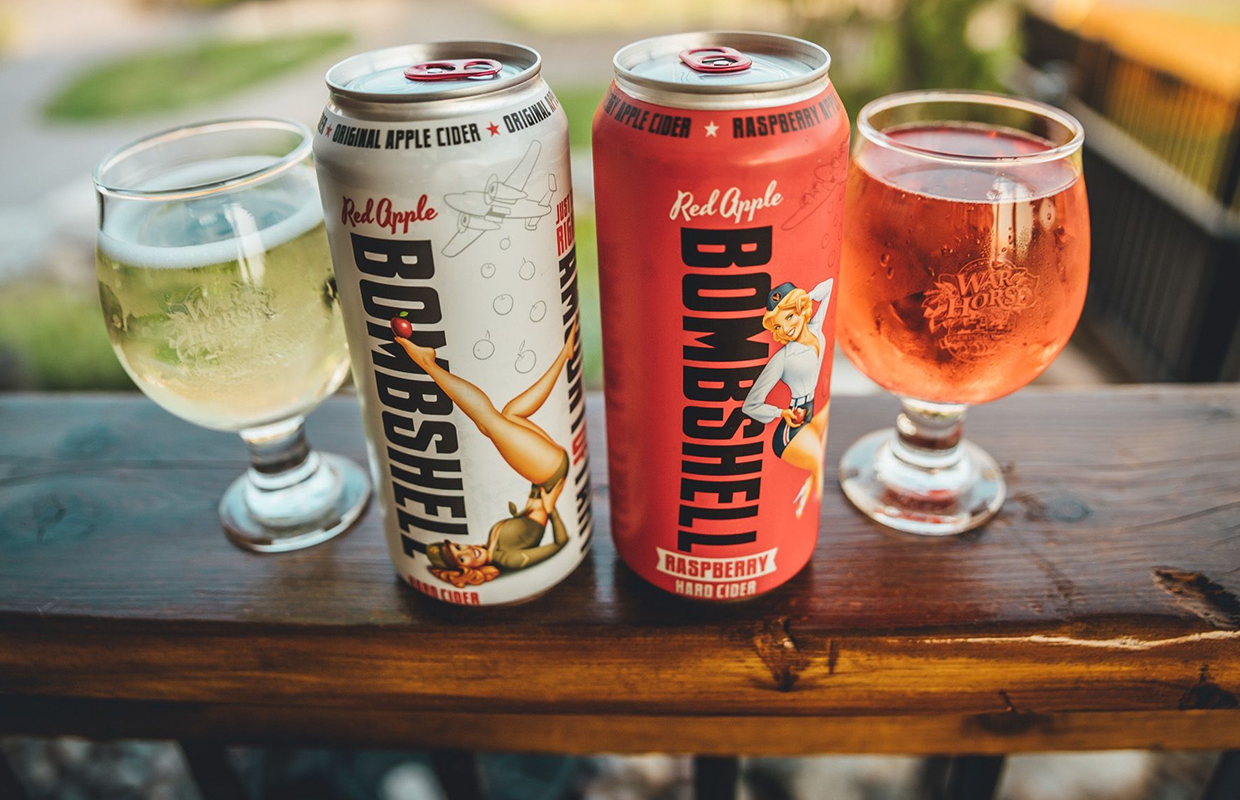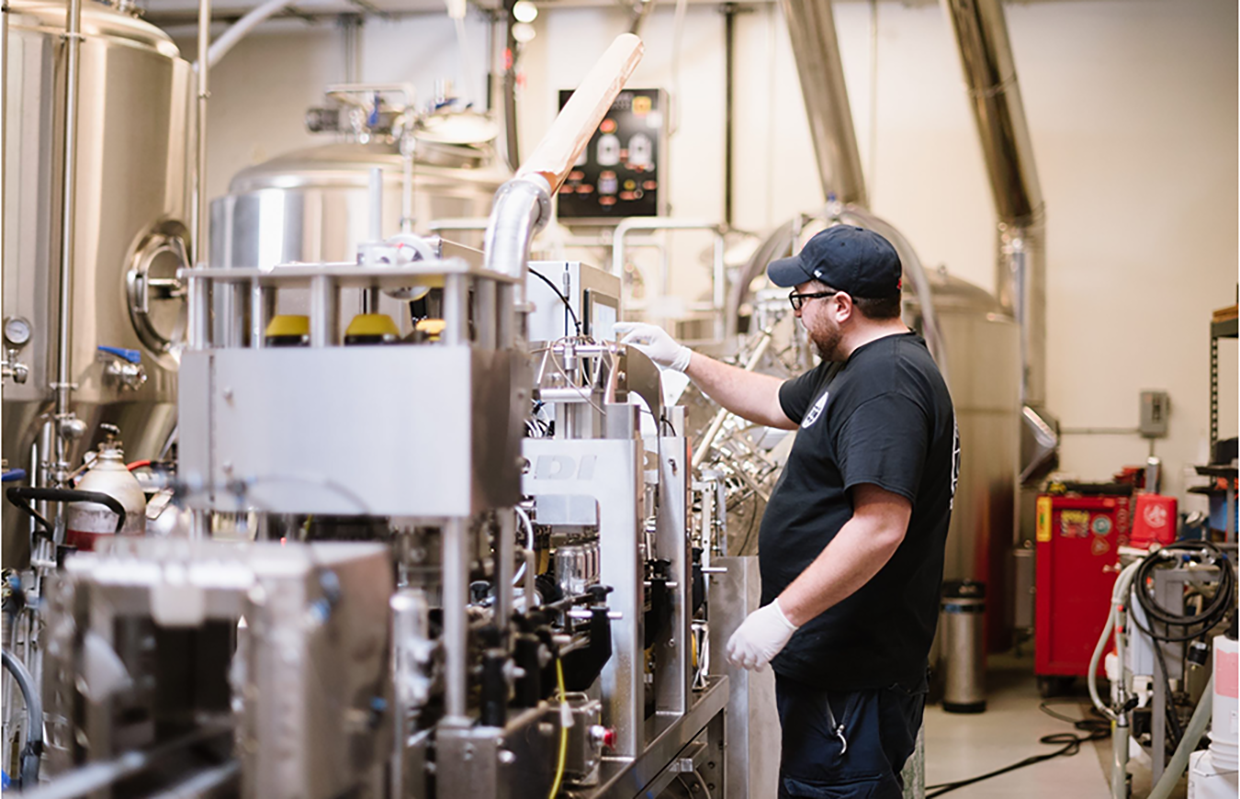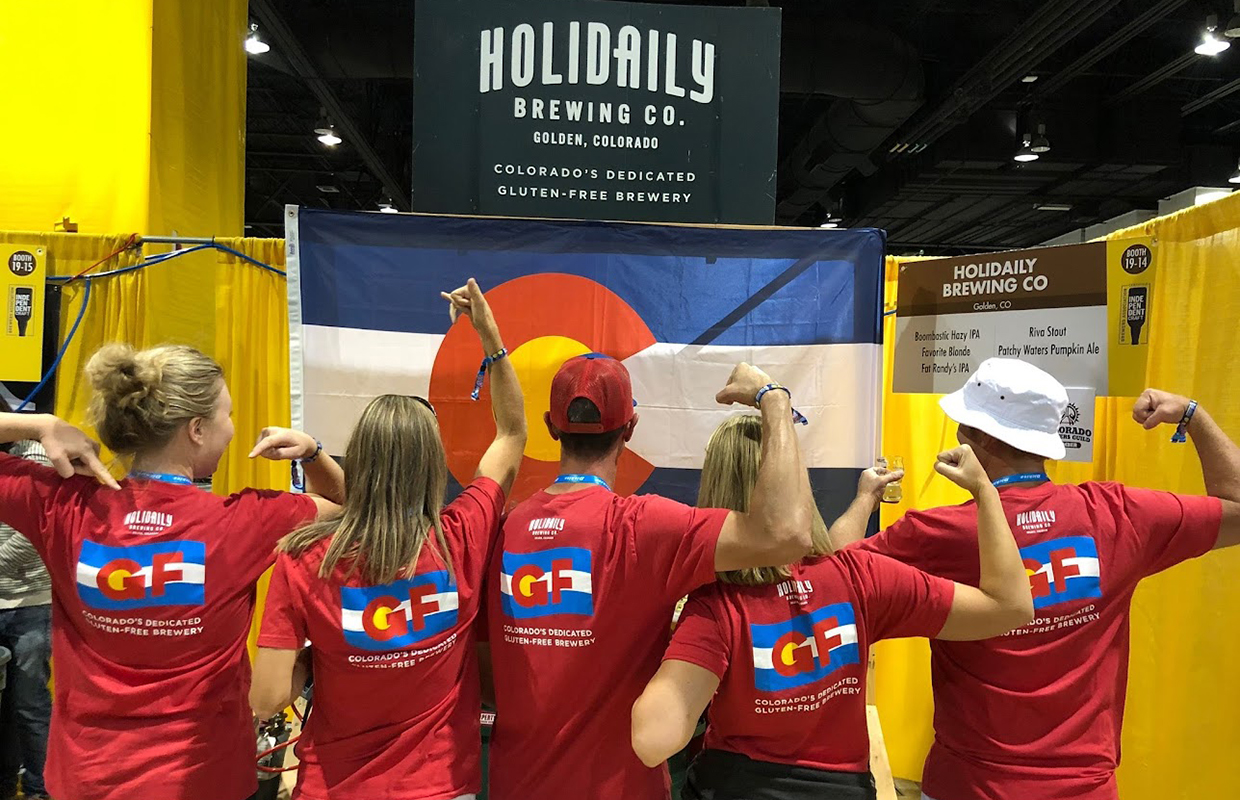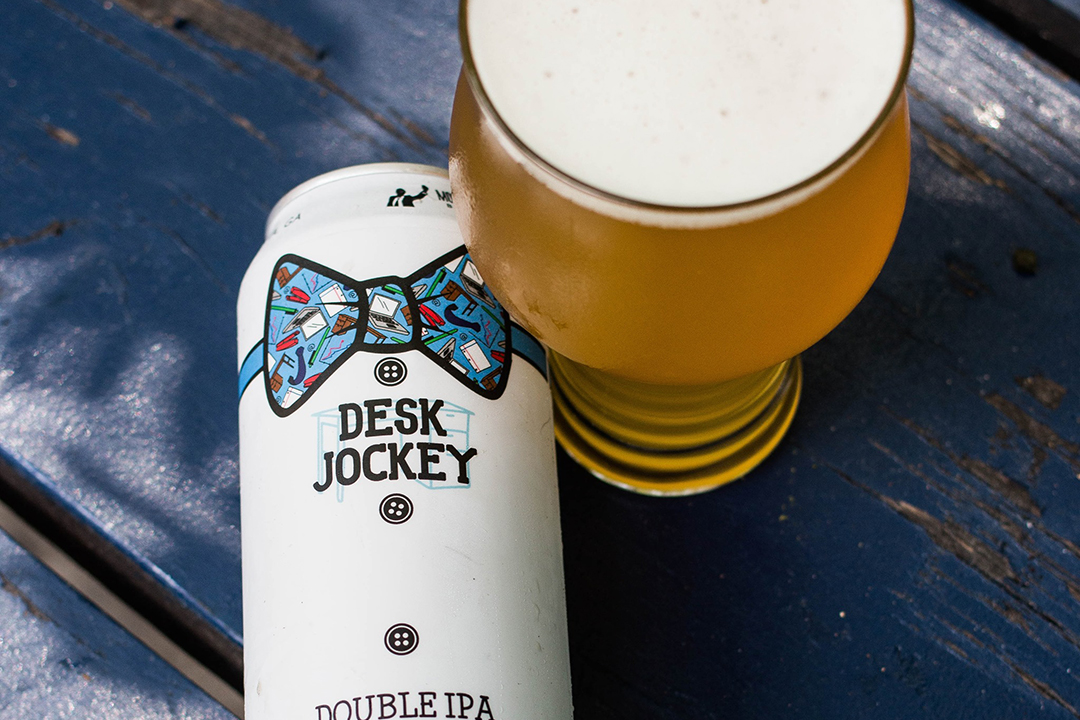
Making both beer and cider can make a lot of sense for companies taking the “something for everyone” approach and with the right suppliers, staff, setup and attitude it can be a realistic way to bring in additional revenue and customers.
While there are numerous open-minded adult beverage consumers, not every craft beer drinker likes hard cider, and not every hard cider drinker likes craft beer. But having both available in your taproom can ensure that customers with differing tastes who enjoy drinking together will choose to do so at your brewery.
War Horse Brewing Company — the craft beer arm of the New York State-based Three Brothers Winery and Estates umbrella — has been making and selling cider nearly as long as it has craft beer, introducing its Bombshell Hard Cider more than a decade ago.
Three Brothers is a Finger Lakes destination spot with three wineries on the premises in addition to a brewery, where both the cider and beer are now made. It wasn’t always that way, but having something for everyone has been the focus since the early days of the estate, co-owner and VP of Production Justin Paolicelli said.
War Horse beer was technically first, but the Bombshell cider was a fast follow and was actually produced onsite before the beer was.
The two ciders they started with — original apple and raspberry — are both semi-sweet ciders that are made using juice purchased from a supplier, and still remain fan favorites for War Horse customers.
“We had the taproom but we weren’t making our own craft beer products,” Paolicelli said, noting that his business partners pitched the idea of adding hard cider to the lineup shortly after opening the taproom. “I was just a winemaker at the time, but I knew it was popular. I called Red Jacket, which is still our current supplier for juice, and got 250 gallons of apple juice and 250 gallons of raspberry juice and co-fermented them. I got some kegging equipment, put in a tap and it sold like crazy.”
Benny Boy Brewing has also made cider a fixture, staking a claim to being “the first combined brewery and cidery in Los Angeles, and, to our knowledge, the city’s only tank bar,” according to co-founder Chelsey Rosetter, who said the clear advantage is being able to bring together people who usually choose breweries with those who usually choose wine bars or cideries.
READ MORE: Making Your Digital Presence Work for You
“Any group of friends can have one destination, a whole menu of options, and a big garden in between,” Rosetter said. “It’s such a unique experience to visit a craft production facility, see the process in action, sample something from a barrel — or in our case, straight from the tank in our Tank Bar — and it’s really fun to be able to showcase more than one product made onsite.”
Showcasing cider
Benny Boy has taken an elevated approach to its beer and cider lineups, producing classic European-inspired beer and dry California cider by following Old World traditions. Beer and cider are made using ingredients straight from the farm with zero filtering and natural carbonation.
The cidery and brewery are two separate buildings with a beer garden in between, and Rosetter said customers are always encouraged to visit both.
“There are a lot of people who are going to come for the beer, but when we get them intrigued by cider, too, we’ve really achieved our goal,” Rosetter said. “One of the fun ways we do this is by offering snakebites (half beer and half cider), and the guest physically walks into the Cider House for the first half and then over to the Brewery for the second half.”
Co-owner and namesake Benny Farber said that once customers are in the door, the education process begins.
“Many people have never heard of cider or expect something ultra-sweet like the commercial examples available at the grocery store, which is why it’s so great when we get to introduce them to a bone-dry craft cider — 100% fermented apple juice with zero residual sugar — and change their whole perception of the category,” Farber said. “It’s also why we offer sampling flights in both buildings. We often see someone try a flight of ciders and then a flight of beers (or vice versa) to get the whole Benny Boy experience.”
Attention to detail was key in creating the feel they were after, down to choosing Apfelwein glassware over stemware for their ciders.
“It’s decidedly not stemware, and it feels more like you’re having a pint of beer,” Rosetter said. “While we make high-quality products, we never want to be a place that is seen as pretentious or unapproachable, and I think the open yet cozy atmosphere we’ve created at Benny Boy is incredibly welcoming.
“Although you might be sipping a cider for the first time, or having a flight of beer styles you’ve never heard of, you can just have fun doing it. Our staff has a big part to do with that energy, too.”
Rosetter said Benny Boy also hosts unique events showcasing drinking traditions from around the world that represent both the worlds of craft beer and cider.
“Of course we leaned hard into Oktoberfest with an awesome German beer line-up, but we also threw a Txotx party, pouring our Spanish-inspired Sidra cider straight from a barrel Basque-style, and we’ve hosted many cheese and cider pairing events as well,” Rosetter said. “Events are a great way to make education fun and celebratory and get people engaged with the products on a more personal level.”
A complementary role
Three Brothers’ approach to serving Bombshell Hard Cider (which is also canned and self-distributed regionally) contrasts starkly to Benny Boy’s. While it’s arguably popular enough to be a standalone product with an experience all its own, it’s served in the War Horse taproom as another choice for patrons who might be more in the mood for a hard cider.
The beer takes top billing even though the cider has traditionally been a bigger seller and played a big role in Three Brothers’ decision to build a production facility to make Bombshell and War Horse, which was previously being made by a contract brewer while the cider was being made in Three Brothers’ winery.
“War Horse is a brewery and a beer taproom,” Paolicelli said. “That’s what it is sold as, so Bombshell always takes a second seat. Like, Bombshell doesn’t have its own Instagram but War Horse does. The ciders get featured on the War Horse page, but there isn’t a cider taproom. There is always this dichotomy of what product we are really trying to sell out of the tasting room because they’re both really popular.”
Where the two companies are similar is they’re both making an effort to be a destination as well as a brewery and cidery. While War Horse recently introduced a line of premium ciders that isolates and showcases specific apple varietals, they’ve traditionally made a more mainstream style of cider than the Los Angeles cidery’s bone dry variety.
Since building their production facility, Paolicelli said there have been between 25 and 30 unique SKUs under the Bombshell name.
“What differentiates us from other breweries and tasting rooms in the Finger Lakes area is that what we’re selling is an experience,” Paolicelli said. “Cider is almost eclipsing other sales on the property. Beer is selling about 2,000 barrels, which is not even close to our cider. No one ever intended for cider to get this big. It’s a sleeper.
“We’ve gained a following and we’ve been consistent with the product we’ve delivered, which is a semisweet to sweet cider with flavors added. It’s a sweet spot for people.”
While they’re trying to showcase and sell their beer, having Bombshell thrive is hardly causing consternation for Three Brothers and War Horse. It’s one way to keep making money in a crowded craft beer market.
A Growth Priority?
While Three Brothers has room to grow Bombshell, scaling up production and widening distribution is not a priority.
The decision whether to prioritize growing a cider line while prioritizing other beverages is a personal one that depends on the brewery, but Three Brothers and War Horse plan to keep Bombshell in its complementary role, which is one reason they’ve stayed away from heavily marketing it.
They want to stay small enough that they can continue with self distribution and keep overhead low enough that they can continue to run with a smaller but well compensated staff.
“We have tried to keep work fun and no one wanted to take over the world with this brand,” Paolicelli said. “We wanted to make enough money to pay everyone very well while not overworking our employees. When you start working with a distributor and focusing on out-of-state distribution, you have to crank out a lot more product and when you start doing that, you usually have to cut corners and the craft product becomes more of a mass market product.
“It’s not that I don’t want to increase demand. There is room to grow within the facility and we’re all young guys and gals who are hungry to make a good living and an impact out there. But I don’t need it to go worldwide.”




Be the first to comment